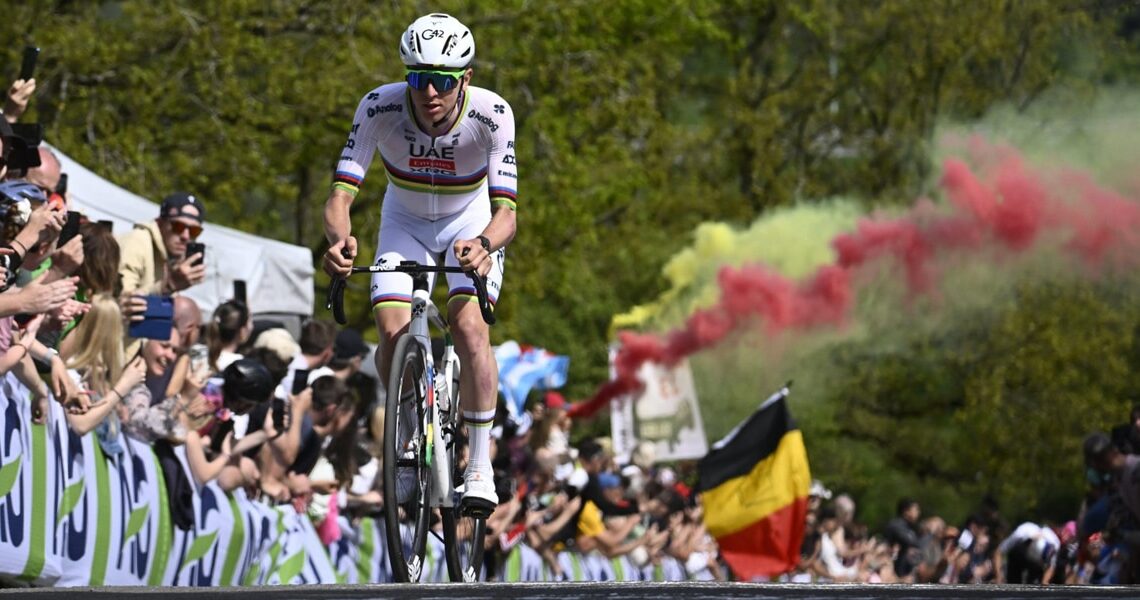
One of the hottest topics in endurance science the past half decade or so is understanding durability – the ability to still put out strong efforts despite a lot of accumulated fatigue.

We all know the feeling. The first interval (or hill) of a workout or ride can feel almost effortless. The same effort during the 10th interval can feel absolute agony. The same with a small rise at the end of a century ride feeling like Alpe d’Huez.
This concept of fatigue resistance or durability is often what separates even elite amateurs from the top pros. Sure an elite amateur can generate a single hard effort – often when fresh – as a pro. But can they replicate that effort with a lot of fatigue in the system, at the end of a mountain stage or in the third week of a Grand Tour?
Modeling of performance and training effects has come a long way in the past few decades, with concepts like critical power, W’, acute and chronic training loads, and different concepts of threshold power and strain scores.
What is more difficult to model and predict, however, is durability. Scientists are still trying to define best practices to quantify it, let alone develop models for it.
Voet et al. 2025
Adding to this literature, my South African friend Rob Lamberts’s lab studied the impact of training on a lab-based durability protocol (Voet et al. 2025). Specifically, their goal was to see whether there were any differences in durability over the course of 8 weeks of natural (i.e., riders were free to do their own coach-based training) training.
 How was the study done?
How was the study done?
- Ten semi-pro male cyclists racing at the Continental level. Their 10 min mean maximal power (MMP) was 5.3 W/kg, and their first and second lactate thresholds were 299 and 347 W, respectively.
- Testing in the lab was done before and after 8 weeks of training that the participants did on their own, guided by their coach rather than the researchers. The testing period was over the off-season of 2021/22 with no racing scheduled.
- The overall lab test day involved a maximal incremental test, 120 min of rest, a first test done while fresh, a 180-min fatiguing ride done outdoors at about 3.2 W/kg, then a second test. Overall, before the second “fatigued” test, riders completed about 38.6 kJ/kg of work, or around 2740 kJ.
- The actual test involved progressive warmup, a 1 min all-out, recovery, then a 10 min all-out effort.
Key Findings
Overall, this was an observational study, which by its nature did not permit the researchers to control or vary the 8-weeks of training systematically. This is part and parcel of elite sport science, as the higher the level of athlete, the more challenging it is to recruit and retain them if too many restrictions or controls are requested.

At the same time, an observational study on only ten relatively homogenous riders makes it challenging to develop a strong correlational analysis. In this case, all the riders were similar in ability by definition (they were all at the Conti level), so their overall fitness and what they were doing during the 8 weeks wouldn’t be widely varied.
 Despite these inherent limitations, what are some key findings?
Despite these inherent limitations, what are some key findings?
- Not surprisingly, performance in both the 1 and 10 min efforts – while either fresh or fatigued, increased after 8 weeks.
- 10 min efforts (6.4-7.3%) improved more than 1 min efforts (2.5-3.6%), in line with the idea that aerobic performance has a higher responsiveness. Alternately, this could be due to a higher emphasis on aerobic training during the 8 weeks of off-season training.
- In the fatigued state, improvements in the 10 min effort was only moderately related to the 1 min effort. This suggests that durability is a multi-dimensional phenomenon rather than a single unified response.
- No difference in improvement was found across the range of 8-week training.
- No single measure of training load over the 8 weeks (e.g., session RPE, Training Stress Score, etc.) had a strong predictive power on durability outcomes.
Summary
What this study suggests is that, while training does improve durability, we are a long way still from truly being able to model or predict what kind of training does what to durability. For now, it’s one of those concepts that’s highly intuitive and something we can feel, but not yet something we have a firm model of.
In the meantime, what are ways we can try to assess our own durability?
At the end of long rides, set up your own test effort in the final part of the ride. This can be similar to what was done here, doing a 1 min and a 10 min effort. Or ride hard up a hill near home. You can also just target a set time at a consistent effort (e.g., 10 min at 250 W) The point is to be consistent so that you can compare over time.
Then analyze your long rides over time. For example, set a filter to only rides where you’ve completed at least X amount of work (e.g., 2,500 kJ). See what patterns you see in those hard efforts you’ve laid out. If you see positive or negative changes, you can work backwards from those dates to then see what training might have contributed to the changes.
Ride fast for a long time and have fun!

References
Voet JG, Erp T van, Viribay A, et al (2025) Training Characteristics Related to (the Changes in) Durability in Semiprofessional Cyclists. https://doi.org/10.1123/ijspp.2024-0321
The post How Does Training Affect Durability appeared first on PezCycling News.



